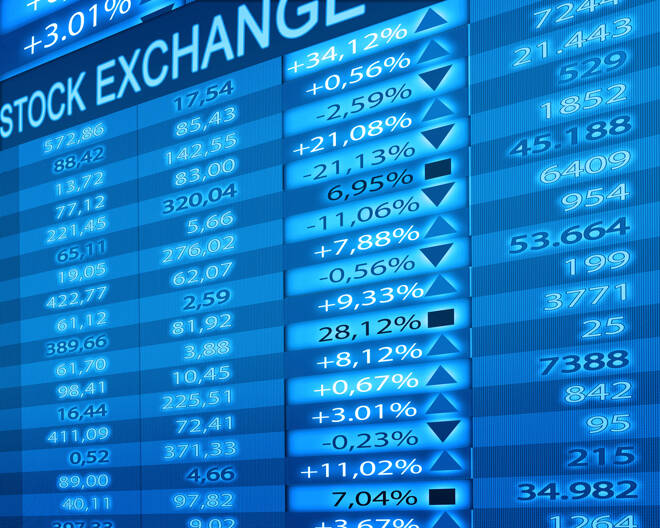Advertisement
Advertisement
Honeywell’s Shares Fall as Q4 Profit Slumps About 13%; Target Price $210
By:
Honeywell International’s shares slumped about 4% on Friday after the technology and manufacturing company reported about 13% fall in quarterly profit as the COVID-19-related travel restrictions and a collapse in air travel continues to hammer demand.
Honeywell International’s shares slumped about 4% on Friday after the technology and manufacturing company reported about 13% fall in quarterly profit as the COVID-19-related travel restrictions and a collapse in air travel continues to hammer demand.
The company which makes parts for planes made by Boeing and Airbus SE said its net income declined to $1.36 billion, or $1.91 per share, in the last quarter of 2020, from $1.56 billion, or $2.16 per share, a year earlier. Adjusted EPS came in at $2.07, beating the Wall Street consensus estimate of $2.0 per share.
Honeywell forecasts 2021 earnings per share of $7.60-$8.00, up 13-19%, and sales between $33.4 billion and $34.4 billion.
“The path to recovery was in focus, with the 2021 outlook. We lower our 2021 sales estimate to $65.2BB (vs $63.4-65.4BB guide) from $67.9BB previously to reflect a slower recovery in commercial aero, with Collins’ commercial businesses likely down slightly y-o-y. Our 2021 EPS est. moves to $3.60 from $3.35 to reflect 80% incrementals at Collins commercial through Q2-Q4, with RTX segment margins exiting the year at 9.6%,” said Sheila Kahyaoglu, equity analyst at Jefferies.
“Given ongoing recovery, we forecast EPS rises to $6.20 (up from $5.50 prior) through 2023 reflecting commercial AM sales 2% above 2019 peak, while OE could be 18% below peak. We est. a 3% CAGR for the defence businesses (RMD + RIS) over the period.”
Honeywell International shares closed 3.68% lower at $195.37 on Friday. However, the stock rose 20% in 2020.
Honeywell International Stock Price Forecast
Seventeen analysts who offered stock ratings for Honeywell International in the last three months forecast the average price in 12 months at $210.19 with a high forecast of $245.00 and a low forecast of $175.00.
The average price target represents a 7.59% increase from the last price of $195.37. From those 17 analysts, nine rated “Buy”, eight rated “Hold”, and none rate “Sell”, according to Tipranks.
Morgan Stanley gave a base target price of $220 with a high of $264 under a bull scenario and $158 under the worst-case scenario. The firm currently has an “Equal-weight” rating on the manufacturing company’s stock.
Several other analysts have also recently commented on the stock. Honeywell International had its price target boosted by UBS Group to $216 from $180. UBS Group currently has a neutral rating on the conglomerate’s stock. Jefferies Financial Group lowered from a buy rating to a hold rating and lifted their target price to $210 from $190.
In addition, JP Morgan lifted their target price to $200 from $198 and gave the company an overweight rating. Barclays lifted their target price to $225 from $180 and gave the company an overweight rating. HSBC lowered to a hold rating from a buy and set a $200.00 target price.
Analyst Comments
“All the ingredients are present for “typical” Honeywell (HON) year of beats and raises with appropriate conservatism to start the year. We see upside as driven by comm’l aero aftermarket, software acceleration, and SPS leverage. HON’s long-cycle businesses should start to recover more substantially later in 2021 with Aero’s trajectory less certain. We expect Aero to remain weak through 2021 as flight hours see sharp declines and maintenance gets deferred until 2022,” said Joshua Pokrzywinski, equity analyst at Morgan Stanley.
“The company’s software offerings should be very attractive to customers as digital transformation accelerates post-COVID and we believe this can partially offset the delayed recovery related to the longer cycle core businesses. We see HON’s balance sheet capacity and repatriation potential as attractive, especially given management’s discipline in M&A to appropriately balance growth, value, and disruption.”
Upside and Downside Risks
Risks to Upside: 1) Aero growth is stronger than expected with a positive margin mix. 2) PMT orders materialize to M-HSD growth next year – highlighted by Morgan Stanley.
Risks to Downside: 1) Margin expansion slower than expected. 2) Continued inflation and an escalating tariff environment with a lack of offsetting price increases represent a potential headwind.
Check out FX Empire’s earnings calendar
About the Author
Vivek Kumarauthor
Vivek has over five years of experience in working for the financial market as a strategist and economist.
Advertisement
